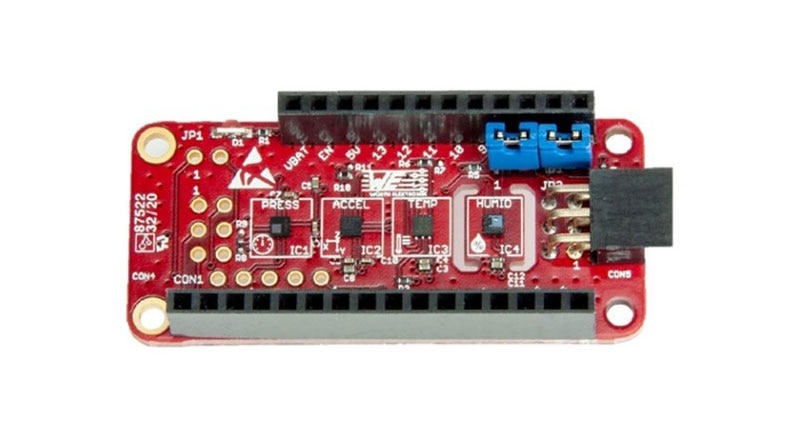The Benefits of Nordic Semiconductor’s nRF960 SiP for Cellular IoT Applications
Cellular IoT, short for Cellular Internet of Things, is revolutionizing the way we connect and communicate with a vast array of devices, making the Internet of Things (IoT) more accessible and versatile than ever before.
This technology leverages cellular networks, such as 2G, 3G, 4G, and 5G, to provide connectivity for a wide range of IoT devices, allowing them to seamlessly exchange data and information.
This blog will look at how Nordic Semiconductor’s nRF9160 SiP (System-in-Package) can assist designers in meeting the size, power, and cost pressures of cellular IoT applications.
The benefits of SiP technology
SiP is the integration of two or more ICs with passive components in a single package. This offers benefits such as reduced system size, quicker time to market, and expanded design opportunities.
The level of integration afforded by SiPs means that digital and analog blocks can be selected, together with passive components, such as antennas and MEMS sensors to reside in a single, small package. This can save significant space on the printed circuit board, contributing to a reduction in the overall footprint of a wide variety of end products, from smartphones to wearables, smart devices, and other IoT nodes.
A compact solution for cellular IoT
Nordic's nRF9160 SiP (Figure 1) brings low-power cellular technology within reach for a diverse range of applications and developers. It addresses the intricate wireless design hurdles and features a comprehensive suite of qualifications required for deploying cellular technology globally, thanks to its high level of integration and pre-certification.
![]() Figure 1: The nRF9160 is a compact, highly integrated System-in-Package (SiP). (Source: Nordic Semiconductor)
Figure 1: The nRF9160 is a compact, highly integrated System-in-Package (SiP). (Source: Nordic Semiconductor)
The nRF9160 provides a streamlined solution for cellular IoT by condensing an application processor, a complete LTE-M/NB-IoT modem, an RF front-end, and integrated power management into a compact 10 mm x 16 mm x 1 mm package. It offers a specific version equipped with built-in GNSS support, tailored for asset tracking applications. Beyond traditional GNSS satellite trilateration, it embraces cell tower and GPS location services to enhance power-efficient location acquisition.
Featuring an LTE modem that is globally compatible, the nRF9160 SiP supports the following bands:
- US - B2, B4, B5, B12, B13, B14, B25, B26, and B66
- EU/APAC - B1, B3, B4, B5, B8, B13, B18, B19, B20, B25, B26, and B28
Additionally, security features such as Arm TrustZone and Arm CryptoCell 310 are supported by the Arm Cortex-M33 embedded in the SiP.
It offers a wide array of digital and analog interfaces and peripherals, enabling diverse single-device design options. Moreover, it can function as a standalone LTE modem when needed. To facilitate a comprehensive cellular IoT design, it includes essential components like modem firmware, a real-time operating system (RTOS), application software samples, and hardware reference designs.
It also includes an nRF52840 board controller that can, for example, be used to build a Bluetooth Low Energy gateway.
Nordic has also introduced the nRF9160-DK (Figure 2), an affordable, fully featured single-board development kit for developing with the nRF9160 SiP using LTE-M, NB-IoT, and GPS.
![]() Figure 2: The nRF9160 development kit. (Source: Nordic Semiconductor)
Figure 2: The nRF9160 development kit. (Source: Nordic Semiconductor)
It features a dedicated antenna for LTE-M and NB-IoT, offering support for a broad spectrum of frequency bands, ensuring global operability. The board is equipped with a dedicated patch antenna for GNSS and a 2.4 GHz antenna designed for Bluetooth LE connectivity. It features SWF RF connectors, offering flexibility for the LTE-M/NB-IoT and 2.4 GHz antennas. Additionally, there is a connector available for an external GNSS antenna.
The kit has user-programmable LEDs (totaling 4), along with 2 buttons and 2 switches for straightforward input and output interactions. It also offers versatility in SIM card options, accommodating both 4FF SIM cards and an MFF2 SIM footprint, allowing for both plug-in and soldered (e)SIMs. As an added convenience, the kit comes bundled with an eSIM card from iBasis, preloaded with 10 MB of data.
Designers can also futureproof their developments with the nRF Connect SDK. This is a comprehensive package that contains all the essentials for a seamless start, including application layer protocols, practical examples, peripheral drivers, and more.
This kit seamlessly integrates with Nordic’s Cloud solution, nRF Cloud, facilitating connectivity. To further aid testing and network evaluation, the nRF Link Monitor tool, found within the nRF Connect for Desktop, furnishes an AT command interface, allowing you to examine your link and retrieve network-related information.
Conclusion
In summary, the advantages of Nordic’s nRF9160 SiP make it an attractive solution for IoT devices that need to be compact, power efficient, and reliable in wireless solutions such as cellular communication. Additional benefits of these devices include signal integrity, ease of design, thermal benefits, and potential cost savings.

Have questions or comments? Continue the conversation on TechForum, DigiKey's online community and technical resource.
Visit TechForum











